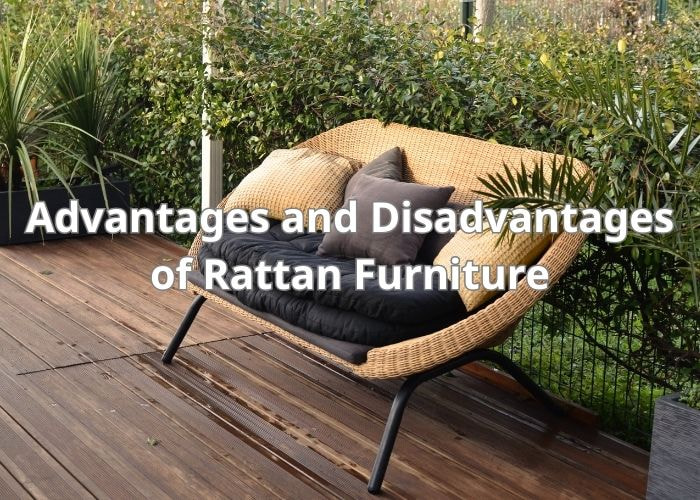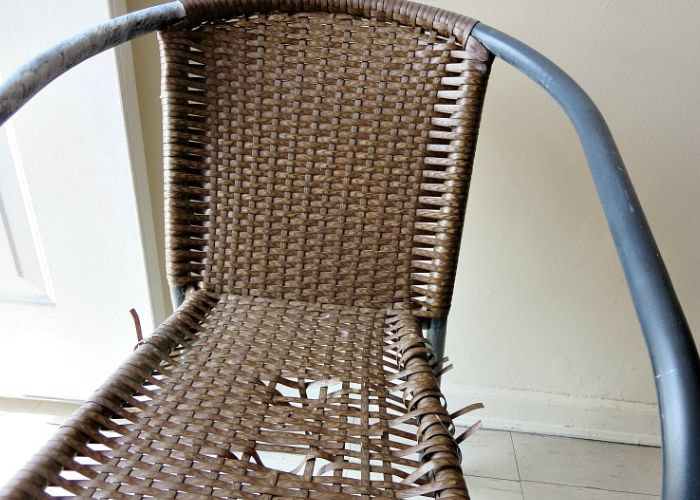Rattan furniture encapsulates both elegance and natural charm. Crafted from the flexible stems of rattan palms, this type of furniture embodies a harmonious blend of strength and aesthetic appeal. Its intricate weaving technique produces a distinctive texture that complements a variety of interior or outdoor spaces. Rattan furniture pieces, whether chairs, sofas, or tables, evoke a sense of casual sophistication, lending a touch of tropical allure to any setting. Beyond its visual appeal, rattan furniture also boasts durability and eco-friendliness, making it a popular choice for those seeking both style and sustainability in their decor choices.
However, rattan furniture also has disadvantages, such as a high price and susceptibility to damage from prolonged exposure to sunlight and moisture, which can lead to fading, warping, and even mold growth. Let’s discover the advantages and disadvantages of rattan furniture with Thanhcongcraft in the following article!

Advantages of Rattan Furniture
Rattan furniture boasts several advantages that make it a popular choice for interior and exterior decor. Firstly, its natural aesthetic and intricate woven texture lend an air of timeless elegance to spaces. Furthermore, this sustainable material is environmentally friendly and also offers versatility, seamlessly fitting into various design styles and settings.
Its breathable quality and comfortable design contribute to a pleasant lounging experience.
Here are some of advantages:
- Natural Aesthetics and Eco-Friendly: Rattan furniture is made of natural materials and is relatively natural and environmentally friendly furniture.
- Breathability and Comfortable Feeling: Rattan sofas have good air ventilation and strong heat dissipation. Rattan helps soothe the nerves. If you use rattan sofas in the living room and outdoors during summer, it will help you alleviate heat and improve sleep.
- Durability, Flexibility, and Sturdiness: Rattan is known for its durability. When properly cared for, high-quality rattan furniture can withstand regular use without compromising its structural integrity. The natural flexibility of rattan allows for intricate weaving and shaping of furniture pieces. This flexibility also contributes to the comfort of the furniture, providing a pleasant sensation when you sit on it.
- Suitable for Indoor and Outdoor Use: While natural rattan might be best suited for indoor use, synthetic rattan (made from materials like resin or plastic) is highly resistant to weather conditions, making it suitable for outdoor furniture. It doesn’t easily warp, crack, or fade when exposed to sunlight or rain.
Disadvantages of Rattan Furniture
One of the most significant disadvantages of rattan furniture is its susceptibility to harsh weather conditions, especially in the case of natural rattan. Prolonged exposure to sunlight, rain, and high humidity can lead to fading, weakening, and even the development of mold or mildew on natural rattan furniture.
This limitation restricts its suitability for outdoor use in unprotected environments, necessitating extra care and maintenance to ensure its longevity.
While synthetic rattan is designed to resist weather conditions better than its natural counterpart, it might not offer the same authentic look and feel that natural rattan provides.
Another disadvantage of rattan furniture is its high price. High-quality rattan furniture can sometimes be expensive due to the craftsmanship and durability it offers. Cheaper options may not provide the same level of quality and longevity.
Additionally, the gaps and crevices in rattan furniture’s weave can trap dirt and dust, making cleaning more difficult compared to other materials.
Wood or metal is often more durable than natural rattan, which is more prone to breaking upon impact. Therefore, it is essential to handle it with care to prevent breakage or damage.

FAQs
Q1: How long should rattan furniture last? A1: Well-made and properly cared rattan furniture can last 5 to 10 years or more. The lifespan of rattan furniture can vary depending on a number of factors, including quality of materials, texture, care and maintenance, and environmental conditions.
Q2: Is rattan furniture worth it? Q2: Rattan furniture is worth to use because rattan furnitures are known for being strong and durable and bring you the breathability and comfortable feeling.
Q3: Why is rattan expensive? A3: What contributes to the high cost of rattan is its challenging harvesting and processing methods. This natural material thrives in tropical environments and can pose accessibility issues during cultivation.
If you have any further questions, please leave thanhcongcraft an email at info@thanhcongcraft.com or Tel/WhatsApp: +84967485411. We are willing to answer your questions.
Final Thought
Rattan furniture is environmentally friendly and offers a comfortable sitting experience, making it a popular choice for both interior and exterior decor.
However, there are also a few disadvantages to having rattan furniture. One drawback is that it poses challenges when used outdoors. Proper maintenance is essential to ensure its longevity.
Hopefully, the information provided in the above article about the disadvantages of rattan furniture can help you gain a better understanding of this product type!












